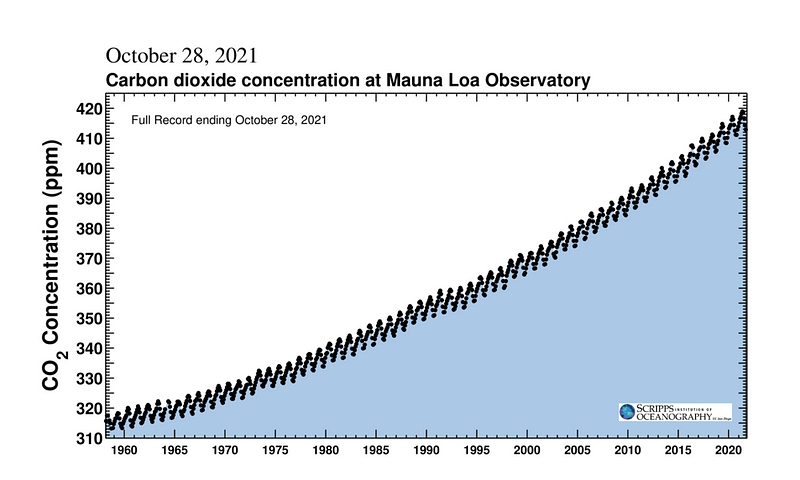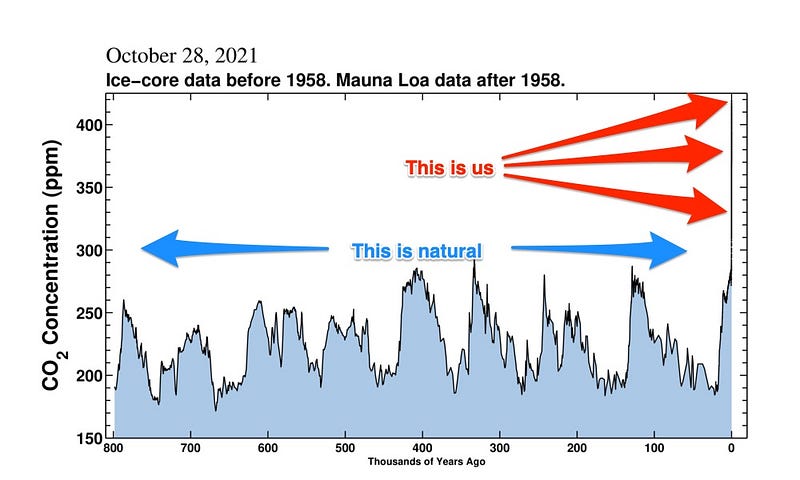Tackling Climate Change: Why It Is Imperative for Our Future
Written on
Understanding the Importance of Climate Change
Recently, I tuned into a local radio discussion where a speaker insisted that there are far more pressing matters to focus on than climate change, claiming that those who are alarmed are misplacing their priorities. This assertion reminded me of the iconic opening lines from Rudyard Kipling's 1895 poem "If":
If you can keep your head when all about you Are losing theirs and blaming it on you; …you’ll be a Man, my son.
I fundamentally disagree with this perspective. Remaining composed while those around you are in a state of chaos implies that you might not fully grasp the situation's gravity.
Climate change represents the most significant challenge our species has ever confronted. Currently, the UN Climate Conference, known as COP26, is taking place—a crucial moment in our history. What actions must we take, and why are they necessary?
To clarify, I want to present some straightforward data that highlights the issue.
Daily observations are conducted far from urban settings at the Mauna Loa Observatory in Hawaii, a practice established in 1958 that continues to this day. This facility serves as a key reference point for measuring CO2 levels. Located on a remote volcano in the Pacific, it is ideally positioned to capture uncontaminated air, providing an accurate representation of the northern hemisphere's atmospheric conditions.
The data collected has resulted in what is known as the Keeling Curve, named after Charles David Keeling, who initiated the monitoring program and oversaw it until his passing in 2005. Since then, the project has been managed by his son, Ralph Keeling.
Here is the complete record of CO2 measurements from 1958 to the present…

As illustrated, atmospheric CO2 levels have risen from approximately 310-320 ppm in 1958 to about 410-420 ppm today. The fluctuations observed are due to the seasonal cycle: in spring and summer, plants absorb CO2, while during winter, this absorption decreases.
Why is this measurement significant?
CO2 is classified as a greenhouse gas, but what does that entail? You likely have some understanding, but it's essential to clarify. Solar energy warms the Earth's surface during the day, and at night, this heat is released. CO2 functions like the glass in a greenhouse, trapping heat and consequently warming the planet.
While the science is intricate, the basic principle is that CO2 absorbs and re-emits infrared radiation, which leads to heat retention near the Earth’s surface. This has resulted in a noticeable increase in global temperatures, leading to:
- Rising sea levels
- Heatwaves
- Droughts
- More intense storms
Not only is sea level rising, but the rate of this rise is also increasing. It’s not solely due to melting ice; warmer water expands as well. To add to your concern, there is enough ice in Antarctica and Greenland to raise sea levels by an additional 65 meters. While such a rise won't occur in our lifetime, it is plausible that we might witness several meters of increase by 2100, potentially displacing 630 million individuals.
Addressing the central question: Yes, it matters more than anything else. When compared to all other issues, climate change is unparalleled in its significance.
Is this phenomenon purely natural?
Let me clarify with a definitive word: no.
When we overlay the Keeling Curve with ice core data spanning 800,000 years, we find ancient bubbles of the atmosphere preserved in ice. This analysis provides a precise record of atmospheric CO2 over millennia.
For those interested in exploring more about ice core data, NASA has an informative page available here. You can delve even deeper into the specifics through the NCEI link provided here.
Here is the complete 800,000-year record of atmospheric CO2…

The natural cycles seen, ranging from about 180 ppm to 280 ppm, are attributed to Milankovitch cycles, which are changes in Earth's orbit influenced by the gravitational pull from other solar system bodies. These cycles are also responsible for the approximately 50,000-year ice age cycles.
What is unequivocally understood is that the current warming trend is not part of natural cycles nor is it driven by variations in solar radiation (for instance, Mars is not warming—only Earth is). The increase in CO2 due to fossil fuel consumption is the primary driver behind global warming.
Regrettably, some people still fail to grasp the dire consequences of this situation. For those who dismiss climate change, your disagreement is not with me or the scientific community but with the fundamental laws of physics. Good luck with that argument.
What actions are necessary?
We must drastically reduce our CO2 emissions; we cannot persist on our current trajectory. The repercussions of inaction are inconceivable.
The COP26 conference is a critical platform where key decision-makers must commit to meaningful change. Failure to act decisively will lead to severe consequences for countless species, including ourselves, and threaten numerous ecosystems.
However, it’s not too late. We find ourselves at a pivotal moment.
Realistically, what can we expect from COP26?
Framing the outcome of COP26 strictly in terms of “Success” or “Failure” may be overly simplistic. Rather than viewing it as a binary switch, think of COP26 as a process aimed at establishing a framework of mitigation efforts that will guide us toward net zero emissions.
The most likely outcome will reveal a gap between emissions pledges and the scientific recommendations. Remember that this gap does not equate to "failure."
If we do nothing and face rapid changes, such as significant sea level rises that could devastate coastal cities within our lifetimes, adapting will be nearly impossible. However, if we can slow the process so that changes unfold over centuries, we stand a better chance of adapting.
In other words, we still have hope; all is not lost. While inaction is not an option, taking steps—regardless of whether they are ideal—is certainly within reach and represents the most likely scenario.
Staying Informed: Follow the #COP26 Developments
For the official COP26 website, click here, and to stay updated, check out the @COP26 Twitter feed.